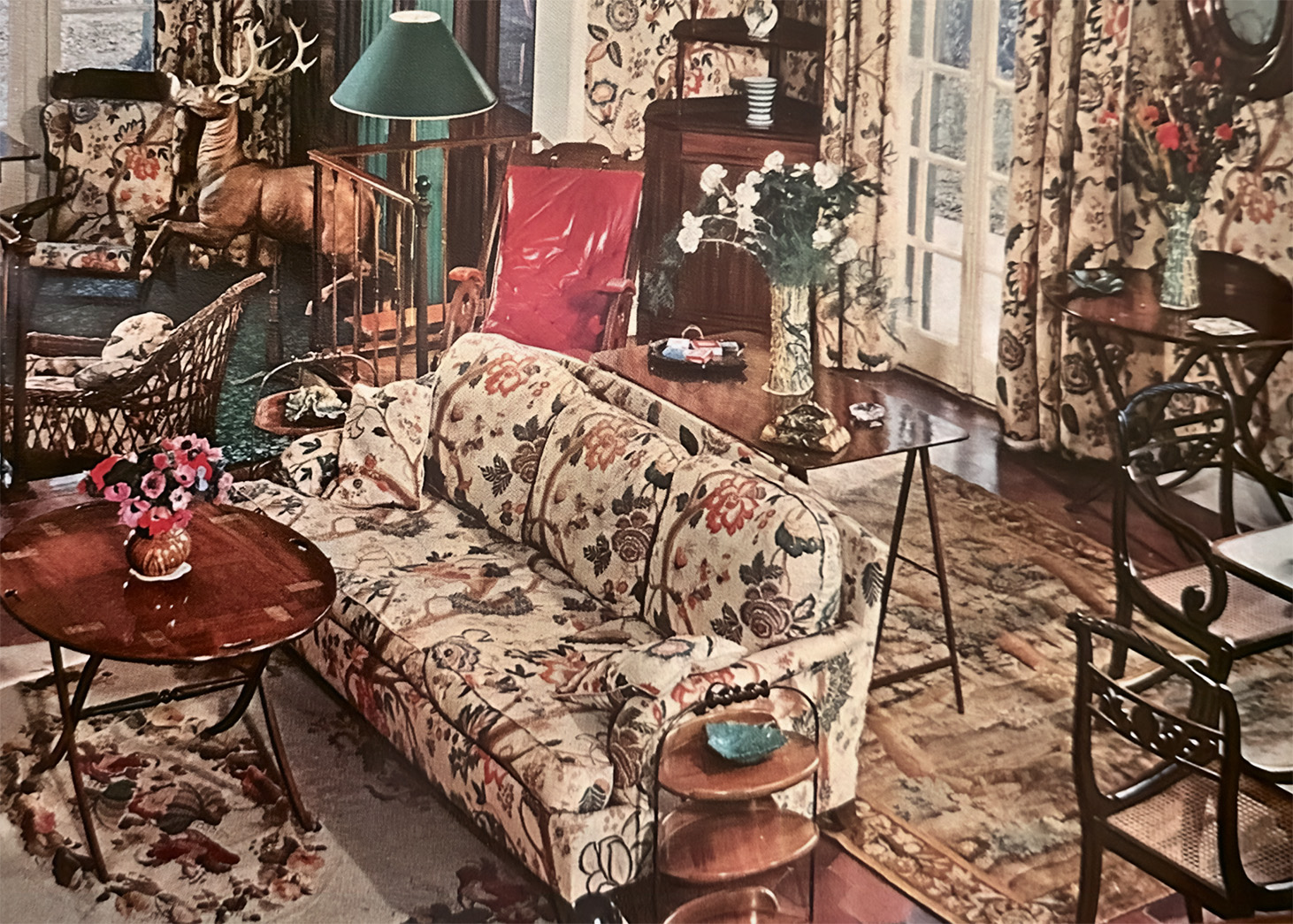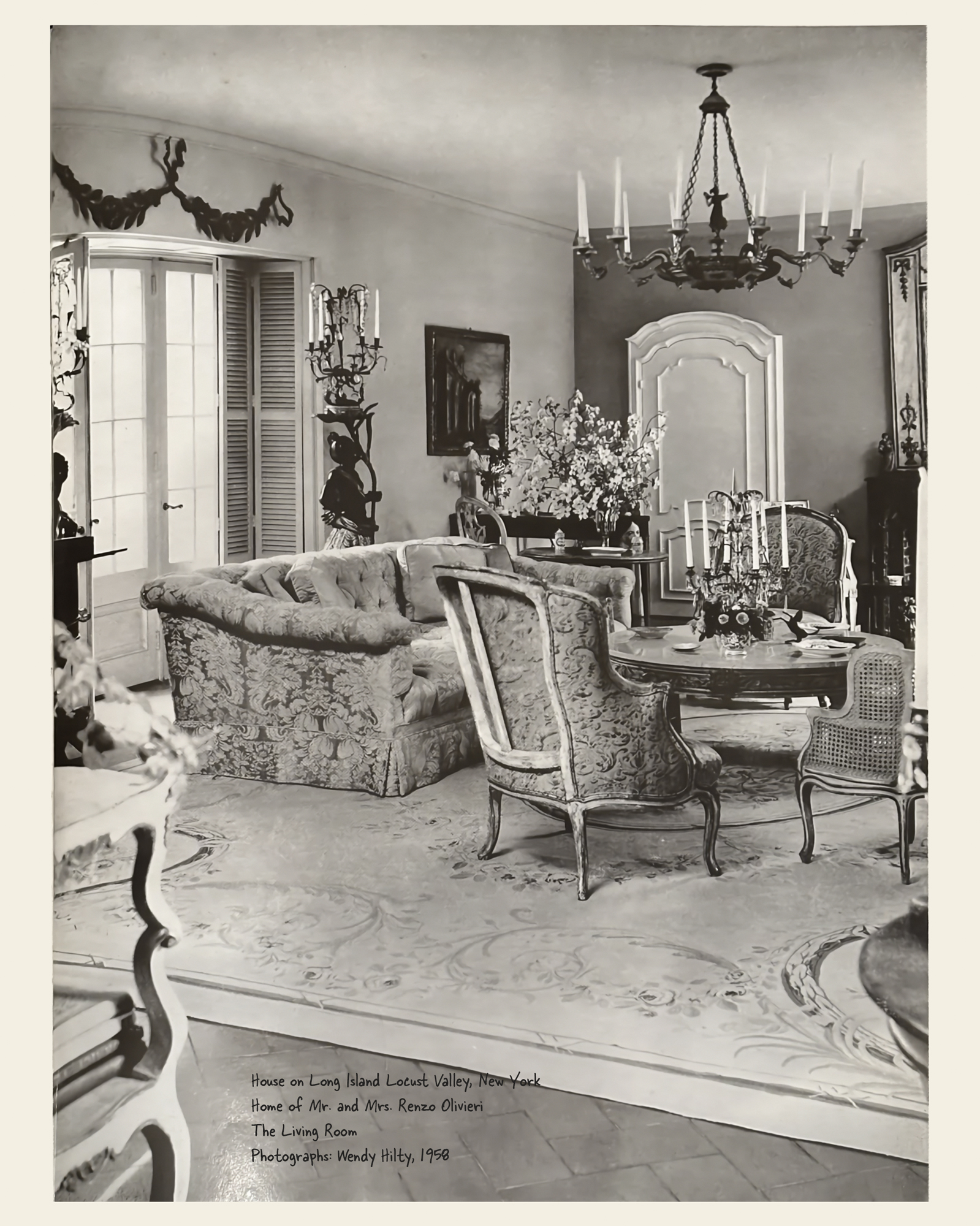Madeleine Castaing and the Influence of Le Style Anglais 1750-1850

Synthesis of English Style as conceived in France: this living room, open on all sides to the forest, seems to bathe in light. Inspired by the trade cottons of the early 19th century, a multicolored percale, used abundantly, imparts a sense of cheerfulness to the rather severe-looking varnished mahogany furniture, making the room both comfortable and irresistible. Located in the heart of Île-de-France, this room’s charm lies less in the luxury of its details than in their subtle juxtaposition.
SYNTHESE DU STYLE ANGLAIS tel qu’on le conçoit en France, ce living-room, ouvert de toutes parts sur la forêt, semble baigner dans la lumière. Inspirée des indiennes de traite du début du xIxe siècle, une percale multicolore, employée avec prodigalité, communique aux meubles d’acajou verni, d’aspect plutôt sévère, son entrain le confort des ilei os un de le de rance, la etat, points irrésistible. En plein cœur de l’Ile-de-France, la — moins par le luxe des détails que par leur subtile juxtaposition.
Thanks to the craze for English Regeney furnishings that broke out not only in France but all over the world, for several years we have seen the birth and growth of a new and legitimate curiosity for all artwork that came from England.”
Le Style Anglais 1750-1850 ©1959
“In 1959 English design was deemed of significant enough interest to result in the production of Le Style anglais: 1750-1850, the last in a series on French design history published by Connaissance des arts. The editors noted, “Thanks to the craze for English Regeney furnishings that broke out not only in France but all over the world, for several years we have seen the birth and growth of a new and legitimate curiosity for all artwork that came from England.” Three reasons are enumerated by the editors as to why the French became so enchanted: first, the Regency’s simplicity, delicacy, and petite proportions were easy to place in small apartments; it mixed just as easily with modern as it did with antique furniture; and finally, “l’argument decisive,” no matter how superb the quality, the prices were well below those for French eighteenth-century furniture. Appropriately, Madeleine had several rooms featured in the book. “Romantic, fanciful, picturesque, a bit theatrical” is the description of English style, but it could equally be applied to le style Castaing.”
–The world of Madeleine Castaing by Emily Eerdmans, ©2010 p 160
Madeleine Castaing, a prominent French decorator, is known for her unique approach to interior design, which integrates English influences with French sensibilities. This room exemplifies her ability to combine the austerity of English furniture with softer, more inviting textiles, resulting in a space that reflects her distinctive style.
Le Style Anglais 1750-1850, published in 1959, is a critical resource in the study of English interior design, particularly as interpreted by French designers. The book remains significant for its exploration of the aesthetic dialogue between England and France during this period and its influence on mid-20th century design. ^jh
Emily Evans Eerdmans (2010). The World of Madeleine Castaing. Rizzoli.







